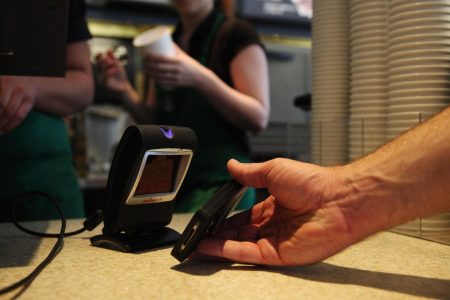The United States’ long-awaited real-time payments (RTP) system, FedNow, is due to launch any day now. The availability of instant money transfers has huge potential to impact virtually all players in the economy, from financial institutions and corporate giants to online shoppers, small business owners and employees.
We in the US are late to the RTP game, and can learn a lot from other countries’ experiences. However, the US has a uniquely fragmented banking landscape, with plenty of other payment methods currently dominating the payments landscape. So how will the FedNow launch affect US payments? Which use cases will gain the most traction? How are financial institutions (FIs) and startup disruptors rising to the occasion and filling in those critical gaps? Where do the economic opportunities lie?
Luckily, we have a time machine that lets us reference the evolutions of RTP adoption in other markets and make predictions about our own future. Here are ten predictions that flow from the launch of FedNow.
1) FedNow will start a domino effect of RTP adoption, led by consumer use cases
The existence of tools like Venmo, Paypal and Zelle has led many to believe that peer-to-peer (P2P) payments have been solved, and FedNow poses a bigger opportunity in the B2B payments space. However, the majority of The Clearing House (TCH) transactions are still driven by consumer use cases, like defunding digital wallet accounts, early wage access (15 percent of the total volume on TCH RTP), insurance payouts and instant refunds.
This adoption pattern is consistent with the evolution of Brazil’s Pix system. P2P payments accounted for 80 percent of transactions immediately following Pix’s launch, a figure that has since declined to 67 percent. Over time, person-to-business (P2B) use cases grew fastest, rising tenfold in two years as cost-sensitive online merchants incentivized consumers to pay with Pix. Today, P2B transactions make up 20 percent of Pix transactions, with an average transfer value of $38. Similar trends will emerge in US e-commerce, but credit cards will continue to reign supreme at the point-of-sale (POS) thanks to convenience, security and interchange-subsidized rewards programs, which don’t exist in most other countries.
Eventually, B2B payments value will be substantial despite a smaller amount of transactions. First, however, the data gap between what the FIs provide and what business customers need must be solved to enable mass business adoption. FIs on legacy systems don’t support the RTP data layer, and are not able to extrapolate the new layers onto transactions in a format that’s usable for the customer. For example, information about a remittance is not currently available to the customer, so businesses are not able to reconcile payments, which is critical for B2B operations, accounting and treasury management.
2) Mass network connectivity could take close to a decade
The last time US banks embraced ubiquitous electronic payment rails was the launch of the automated clearing house (ACH) network for direct deposits in the 1970s, and it took between seven and 10 years. FedNow recently announced 57 organizations that are “ready” to participate in the new system, including J.P. Morgan, Wells Fargo and Adyen, and we estimate that group will swell to 200 by year’s end and 500 by 2024, as banks learn about fraud prevention, liquidity management and other factors. Remember: the US has almost 8,000 banks and credit unions.
While banks will lose some revenue from transfer fees in the short term, FedNow will also offer new services, increase the volume of transactions and reduce cash costs for banks, as Brazil has witnessed in its own RTP evolution.
Incumbents and startups are racing to get the banks onto FedNow rails, but it will be a long road. Given the fragmented American banking landscape, core providers like Fiserv and Jack Henry are vying to be the single, straightforward point of connectivity between the banks and RTP infrastructure. Emerging fintech vendors like Volante, Alacriti, Finzly and Trice have also jumped into the race, and international players like Matera and GFT are using their experience implementing Pix in Brazil to compete for US market share.
3) FedNow will replace cash and checks, but not credit cards
In 2021, checks accounted for only five percent of payment volume. ACH payments ate into the usage of business-to-consumer checks, and consumer-to-consumer checks declined with the rise of P2P apps. For now, a lot of B2B transactions still use checks (checks still account for 21 percent of payment value), but we predict that number will decline with the launch of FedNow.
Meanwhile, the 2020 acceleration away from cash to credit cards has continued into 2023. Cash use declined from 31 percent to 18 percent of all payments between 2016 and 2023, and credit card usage increased at the exact same rate.
We have seen similar trends happen across the Atlantic. Faster Payments in the UK also replaced cash and cheques over time, while credit card usage remained consistent — even as debit card usage increased.
The rate and reasons for cash’s decline vary by country, and the path is not always linear. In India, the growth of its A2A real-time payments system, called UPI, is the primary driver for cash’s decline, whereas digital wallets have claimed cash’s mantle in Saudi Arabia and Vietnam. We believe that FedNow-enabled real-time payments will accelerate cash’s demise in the US, especially among younger demographics.
4) P2B account-to-account use cases will grow slowly, but steadily
Merchants are drawn to account-to-account (A2A) payments because they’re cheaper than credit cards and the money arrives instantly. The P2B use case for A2A payments tends to succeed in markets where banks take the lead. In Poland, for example, the BLIK A2A mobile payment solution is a cooperative effort between six major banks, supported by banking apps, e-commerce storefronts, points-of-sale, P2P payments, cash deposit systems and ATM withdrawals. BLIK now claims 67 percent of Polish e-commerce payments. A similar system in the Netherlands, called iDeal, accounted for 62 percent of Dutch e-commerce transactions in 2022.
In the US, A2A payments accounted for nine percent of e-commerce transactions last year, and between the prevalence of credit cards and banking fragmentation, merchants will be slow to adopt RTP. However, some American retailers are encouraging customers to try an A2A/ACH solution called Pay by Bank as a cheaper and faster alternative to credit cards. Once the ability to offer chargebacks on A2A transactions and dispute management becomes available, that will also drive adoption. Online e-commerce will lead the way here, as it’s easier to click a “buy” button than initiating a payment on your phone at a POS without the proliferation and interoperability of QR codes. In the US, there’s no suggestion that FedNow will provide point-of-sale capabilities for retailers overnight. As such, adoption can only grow after financial institutions have built out these customer experiences.
5) FedNow will serve as an incremental improvement on US payment infrastructure, not a paradigm shift
Very few great companies were built off of RTP innovation around the world. As an example, Pix fueled the rise of digital wallets like PicPay, which doubled the digital wallet share of POS transaction value from eight percent in 2021 to 15 percent a year later. Pix is free to consumers, so credit is PicPay’s main monetization channel. They are now looking for ways to diversify their revenue, such as payroll loan and car equity, and heading towards a super app model that has seen success in China (WeChat Pay) and India (PhonePe). We doubt there would be a new digital wallet super app that could be created on the back of FedNow.
However, many more companies were able to leverage RTP to expand their product accessibility and functionality. In Brazil, Nubank leveraged Pix to accelerate account funding and reach customers who didn’t have a bank account. In the US, B2B payments companies like Melio, Adyen and Stripe will add FedNow rails to their menu of options. Overall, FedNow will drive payment services efficiency and, more importantly, stimulate competition for those services through innovation.
6) If there’s going to be a QR code renaissance, interoperability is a prerequisite
QR codes are a ubiquitous payment method in Asia and parts of Latin America — they currently initiate nearly 20 percent of Pix transactions — but interoperability is key to their success. In other words: a code must be scannable no matter which bank issued it or which payment app is scanning it. Interoperability requires a broker at the center of the ecosystem, usually a role for a country’s central bank or regulators, but for now FedNow and TCH do not plan to play this role.
However, Visa recently launched its Visa+ product to power interoperable payments across P2P apps. It currently supports PayPal and Venmo, and will soon incorporate Western Union, TabaPay, i2c and DailyPay. Visa is playing the long game on RTP, with a plan to become the new rails — and even an identity layer with their unique payment handle — that will consolidate the fragmented P2P landscape and hedge against the risk of credit cards losing share to A2A.
7) Digital wallets will become the next battlefield in e-commerce and at the point of sale
In terms of digital wallet adoption, China sets the pace. A remarkable 81 percent of e-commerce transaction value occurs through digital wallets there, far exceeding India, which has the second-highest market adoption at 50 percent. At the POS, Chinese digital wallets accounted for 56 percent of transaction value. In India, the figure was 35 percent.
Digital wallets recently became the leading online payment method in the US, with 32 percent market share in 2022 — a figure that has more than doubled since 2014. The American credit and debit card markets are increasingly intermediated by a handful of major digital wallet brands: PayPal, Google Pay and Apple Pay, with challengers like Shopify’s Shop Pay and Cash App Pay recently joining the playing field. As FedNow rolls out, we believe A2A will surpass debit and credit cards as the main source of digital wallet funding, intensifying the battle for the “top of the wallet.”
Meanwhile, digital wallets have the potential to become the central location where consumers keep their financial records. In one study, 50 percent of respondents said it was one of their main reasons for using a credit card, and we believe digital wallets are better placed to provide a searchable, aggregated list of all transactions across all the cards in a digital wallet. Apple has made attempts, but faces challenges from the banks.
8) Authorized push payment fraud will rise
In the age of generative AI, authorized push payment (APP) fraud is going to be even harder to mitigate, and requires a dual response from both the public and private sectors. In the UK, the vast majority of APP fraud cases start online, prompting the payments regulator to step in with scam reimbursement. And in Brazil, financial crime was a predominantly offline phenomenon after Pix’s launch, prompting the Central Bank to limit transfers at night amid a kidnapping spree. On the private side, Nubank has implemented a system that places lower transfer limits on money that is sent via a telecom or public WiFi, as opposed to a home WiFi network. And PicPay was the first to launch Digital Wallet insurance to offer protection from identity theft and scams.
While it remains unclear how FedNow plans to protect consumers from the risk of APP fraud, fintech startups are assembling competing data consortiums that would prevent the use of compromised identity information to defraud multiple apps and services. Plaid’s Beacon, Sardine’s SardineX and Unit21’s Fintech Fraud DAO were all announced in quick succession. Given the network effect, we expect one winner to take all.
9) Consumers and small businesses are willing to pay more for faster, cheaper payments
We believe that these two groups stand to gain the most from real-time payments infrastructure. However, whether and how much businesses can monetize those use cases remains to be seen. Both groups are inherently price-sensitive, though FedNow plans to enhance the products’ overall experience and make them more competitive.
Consumer use cases include account funding and defunding for digital wallets, neobank accounts and investment accounts, as well as instant pay access for gig economy workers. In Q2 of 2022, instant payroll accounted for 15 percent of the total payment volume on TCH’s RTP system, growing 104 percent over the prior quarter. Big retailers like Walmart have also expressed their interest, as more than 45 percent of calls to its call centers boil down to, “Where is my refund?”
Under the payments status quo, small businesses are stuck choosing between speed (accept a credit card and its 2.9 percent fee) and price (a slower ACH bank transfer). That will change with FedNow. Recently, Shopify announced a partnership with invoice payments platform Melio to offer direct bill payments services, including an option to pay through a bank account. This will improve Shopify merchants’ experience by shortening their cash conversion cycle and reducing their working capital needs.
Meanwhile, for large B2B transactions, executing payments, orchestrating queuing mechanisms and aggregating rails is not enough. Businesses will need to build in end-to-end value ownership to avoid commoditization.
Overall, we see FedNow as a way to drive efficiency in payment services and, more importantly, stimulate competition among existing payments and financial service providers rather than creating brand new categories.
10) FedNow will fuel cross-border money movement
Integration between Thailand’s PromptPay, Singapore’s PayNow, Malaysia’s DuitNow and India’s UPI real-time payment systems has stimulated increased cross-border money movement. In Scandinavia, the P27 cross-border A2A payment system combines eight payment clearing systems into one integrated real-time, instant-clearing, multi-currency payment platform. Indians living in 10 countries (including the US and UK) will soon be able to use UPI, paving the way for a global remittance network.
The US is moving in a similar direction. Last October The Clearing House, EBA Clearing and SWIFT announced an immediate cross-border payments pilot, which seeks to leverage existing rails to connect US and European banking systems via instant settlement between RTP and RT1. In theory, the US might connect FedNow with other RTP systems to facilitate instant clearing for multiple currencies, international remittances and even global transaction banking. Cross-border payment providers like Thunes and Nium have built networks of local payout endpoints to “move” money instantly by operating an internal treasury that credits and debits pre-funded local accounts. With FedNow, we expect to see more players entering the space to leverage all these regional RTP schemes.
Where do you agree or disagree? What predictions do you have about the coming RTP gold rush? Share them in the comments below, or join my roundtable discussion at TechCrunch Disrupt 2023 on Tuesday, September 19 at 1:30 p.m. And be sure to follow me on LinkedIn.
Read the full article here















